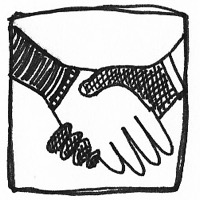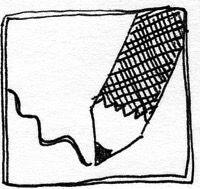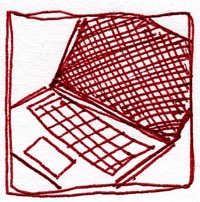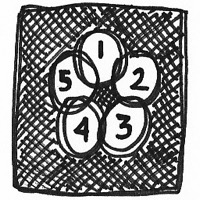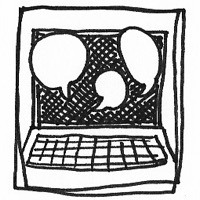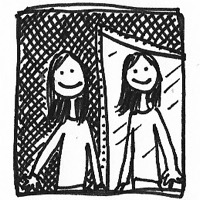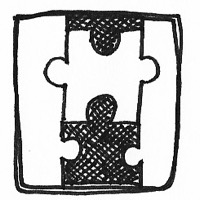The eTC ENGL 219 course was designed with a goal of promoting community in a variety of ways, specifically focusing on how students form a community of online learners and how such community-building can promote entrance into a larger community of 21st-century technical communicators. Online learning can often be an isolating endeavor (Lynch, 2004), with students feeling as if they are working through the course curriculum by themselves; the gravity of such feelings weighs even more heavily on students during COVID-times and requires us to be even more community-focused in online learning contexts. To help form a community in online spaces, D. Randy Garrison, Terry Anderson, and Walter Archer (1999) suggested adopting the Community of Inquiry (CoI) Framework, indicating that students feel connected to their online communities when they see themselves as "real," with the ability to share feelings and ideas with others. According to Garrison et al., establishment of a successful online community where learners interact with each other, feel supported, and learn course concepts depends upon three presences: teacher, social, and cognitive. The social presence students feel or do not feel in the online classroom has direct impact on their academic success; when students feel the social connection to their peers and instructors, they become more engaged and motivated to complete the course, and in turn, find the experience more satisfying (Cobb, 2009). However, Jered Borup, Richard West, and Charles Graham (2012) posited that while social presence and a sense of community in the online classroom might be a key factor in students' success, there is little research that discusses just how this social presence can be increased. The authors suggested the absence of visual cues—that is, when the instructor designs the course using only text-based prompts and course materials to aid students' understanding—can actually hinder community building, leading students to feel the distance between themselves and their peers (see also Borup et al., 2011). Recent scholarship from Mary Stewart (2019) indicated the potential for digital composition to encourage a community; providing opportunities to remix modes within multimodal projects and to collaborate with peers, Stewart argued, can encourage peer-to-peer learning and thereby increase social presence.
To further combat isolation and create a sense of community, Borup et al. (2012) encouraged educators to use a mix of instructional tools, specifically asynchronous video, within discussion boards and evaluation, with peers and instructors giving feedback via video or sound. The authors suggested that the human quality of such media, including being able to use inflection in voice with sound and facial expressions and gestures with video, promotes a strong sense of connection through both teacher and social presences. As such, to first form a community of online learners, our curriculum includes supplemental videos that corresponded to each assignment, as well as mini-lecture videos that would further clarify potentially confusing concepts. Furthermore, we also offer students formative feedback on their multimodal projects using screencapture video to enhance student learning (Davis & McGrail, 2009) and increase teacher presence (Thompson & Lee, 2012).
There is a strong connection between forming a community of online learners via multimodal tools and having students create multimodal texts for entrance into a larger community of successful communicators. According to Angela Thomas (2008), literacy is at the heart of any discussion of community, with practices such as "writing, communicating, participating, speaking, and performing" (p. 673) shaping the community in which they occur. Such literacy practices become what Pierre Bourdieu (1986) called "cultural capital," or the skills necessary for societal success. These skills, Thomas (2008) argued, include students learning the "semiotics of media design so that they can understand both how to produce and how to critique" (p. 692). Similarly, we believe that the skills necessary for entrance in both the online community and the larger community of (technical) writers beyond academia include being able to analyze, interact with, and create multimodal texts. As instructors, we are charged with the task of developing an online class community that mimics the larger community of technical communicators students will enter. In other words, the sense of community and the literacy skills learned within must transfer to life outside of the academic classroom space we have constructed.
Thomas (2008) also argued that technological decisions help individuals to form an identity within a community, and in our classes, it is important for students to recognize their identities as 21st-century communicators. Like Thomas, we define community as individuals sharing their ideas and literacy practices, and we also want them to reflect on how these ideas and practices will help them in the future. Building on Thomas's argument, we suggest that "technological decisions" in our courses include making choices of mode and medium to effectively communicate with others within a community. Perhaps more importantly, students reflect on how the choices they have made over the course of the semester impact the creation of subsequent projects and how all of the lessons learned will be important for the workforce (see this webtext's Synthesis Through Memory in the Discussion Board section for examples of these reflections). In addition, their reflections must also offer evidence of their learning, referencing the course tools, activities, and peer-to-peer and instructor-to-student comments and interactions as support for the argument of what they learned. Such metacognitive reflection, Garrison (2003) argued, is imperative for not only establishing connectivity or community in the online classroom, but also in encouraging higher-order thinking, or cognitive presence, a key element in a Community of Inquiry.
Following Borup et al.'s (2012) argument for the use of asynchronous video to encourage community building online, and to encourage cognitive and social presence within a CoI framework, we encouraged our students to create videos that illustrated their learning over the course of the semester. This creation of videos (perhaps obviously) also furthers our multimodal curriculum. Our insistence on students' assessing and choosing modalities of communication to best share content with the community of their classmates is inherently connected to the role of Memory in the class, which we discuss further in the section Using the Rhetorical Canons to Support Multimodal Communication. While Whittemore (2015), echoing Walter Ong (1982), suggested that "writing is the quintessential memory technology, and consequently, those who write for their workplaces may be regarded as keepers of the common memory" (p. 10), we believe that tides have been shifting so that memory/knowledge/reflection can increasingly be preserved across modalities of communication, as crafted by experienced communicators (specifically technical communicators) and in many workplaces. In our courses, we encourage metacognitive reflection to promote higher-order thinking that encourages a community of learners (Garrison, 2003), which mimics the higher-order thinking they will learn on the job within a community of technical communicators.
